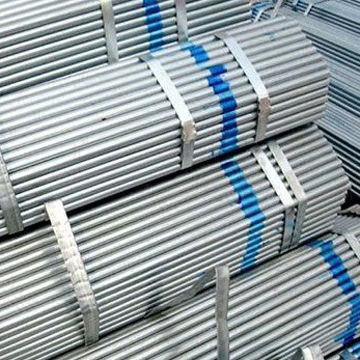Everything You Need to Know about Galvanized Pipes
 Galvanized steel is steel that has been chemically coated with zinc oxide to fight corrosion. The non-corroding zinc coat makes the steel more durable and attractive since it produces a semi-glossy, non-scratch finish. Galvanized steel is technically not just steel with zinc coating but an alloy that is composed of steel and zinc. It is widely used in several outdoor, construction, industrial and marine applications.
Galvanized steel is steel that has been chemically coated with zinc oxide to fight corrosion. The non-corroding zinc coat makes the steel more durable and attractive since it produces a semi-glossy, non-scratch finish. Galvanized steel is technically not just steel with zinc coating but an alloy that is composed of steel and zinc. It is widely used in several outdoor, construction, industrial and marine applications.
Similarly, galvanized pipes are steel pipes that have been coated in layers of zinc to make them more durable and better capable of resisting corrosion. Galvanized pipes are perfect for outdoor applications since they are quite durable; much more durable than PVC or plastic. When galvanized pipes first appeared in the market, they became popular very quickly because of the promise to withstand the elements and to last longer than other types of piping.
Why You Need to Replace Galvanized Pipes
One, most homes and buildings that have been constructed before the 1960s made use of galvanized pipes. This means these pipes have been rusting and water has been flowing through rusty pipes for a number of decades already.
Two, over the years people began to understand that the zinc coating wears off and water quality is jeopardized. Also, as the zinc erodes from the galvanized pipes, the bare steel walls corrode and lead begins to accumulate. When the pipes are moved or when water pressure is strong, lead materials could get dislodged from the walls and eventually mix with the water. This deteriorates the quality of water and raises the risks of lead poisoning. Users will be exposed to lead without even knowing it.
The most common symptoms of lead poisoning are anemia, high blood pressure and damaged kidneys. Lead exposure is especially dangerous to young children and pregnant women. Lead has no known biological benefit to man. It can harm one’s nervous system, bones, gums, reproductive system, and affect the metabolism of calcium and Vitamin D. Overexposure could result to convulsions, coma and death.
According to studies, the most common sources of lead are motor vehicle exhaust, industrial wastes, contaminated landfills, and drinking water fromold lead or galvanized piping.
Three, even without the absence of lead and corrosion, old pipes should be replaced. The tiniest cracks or damages can allow harmful microorganisms to get into the residential tap system. Buildings that were constructed before the 1960s and have not gone through major plumbing re-installations are most likely to still be using old and corroded galvanized pipes. These should be replaced.
When unsure whether your plumbing system still makes sure of galvanized pipes, call a plumber for advice. Generally, if you scratch a galvanized pipe, it will reveal a silvery-gray color and with threads. In comparison, a scratched copper pipe will show a bronze, coppery color while plastic reveals a white color.
What You Can Do
Families should worry if their water passes through galvanized pipes from the main source to the taps inside the house. This means the family has been using and consuming poor quality water with probably high levels of lead.
However, replacing all your pipes could be very expensive and time consuming. This, though, must be considered if you wish your family to live in a healthy environment. You might need some time to prepare for a major project like complete home re-piping. For the meantime, do not drink water from the tap, use a filtration system if you must drink from the tap, and small children and pregnant women should stay away from tap water. It should be noted that boiling the water helps in killing germs and bacteria but it will not reduce the level of lead contents. Having said this, you might have to resolve to buying bottled water for the time being.
Joyce Del Rosario is a blogger from Toronto Plumber, one the of the leading sites offering Sewer Camera Inspections.
Joy cegdelrosario
Latest posts by Joy cegdelrosario (see all)
- All You Need to Know about Sewage - October 4, 2013
- Everything You Need to Know about Galvanized Pipes - October 4, 2013
